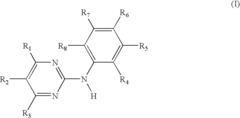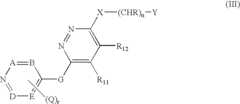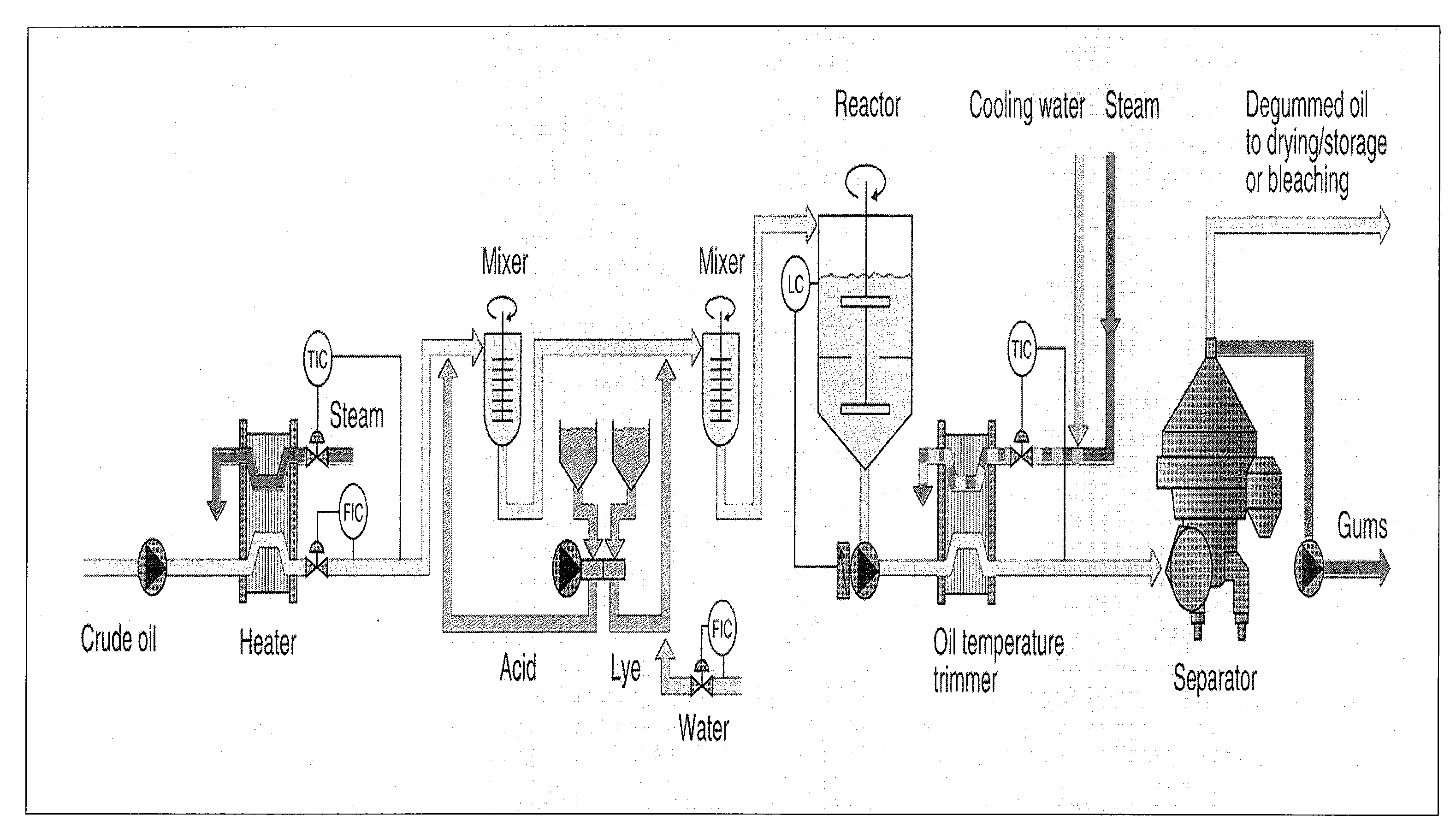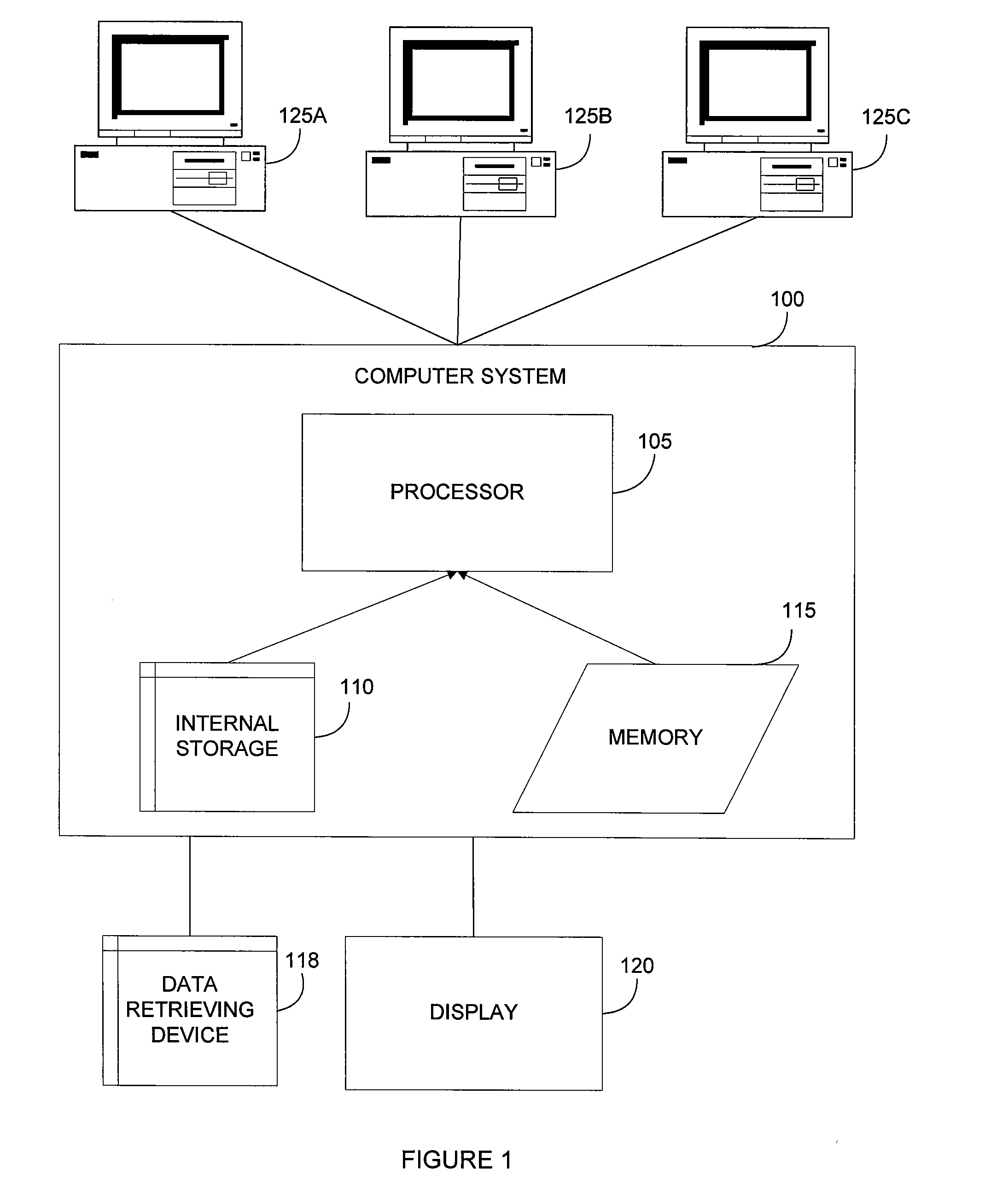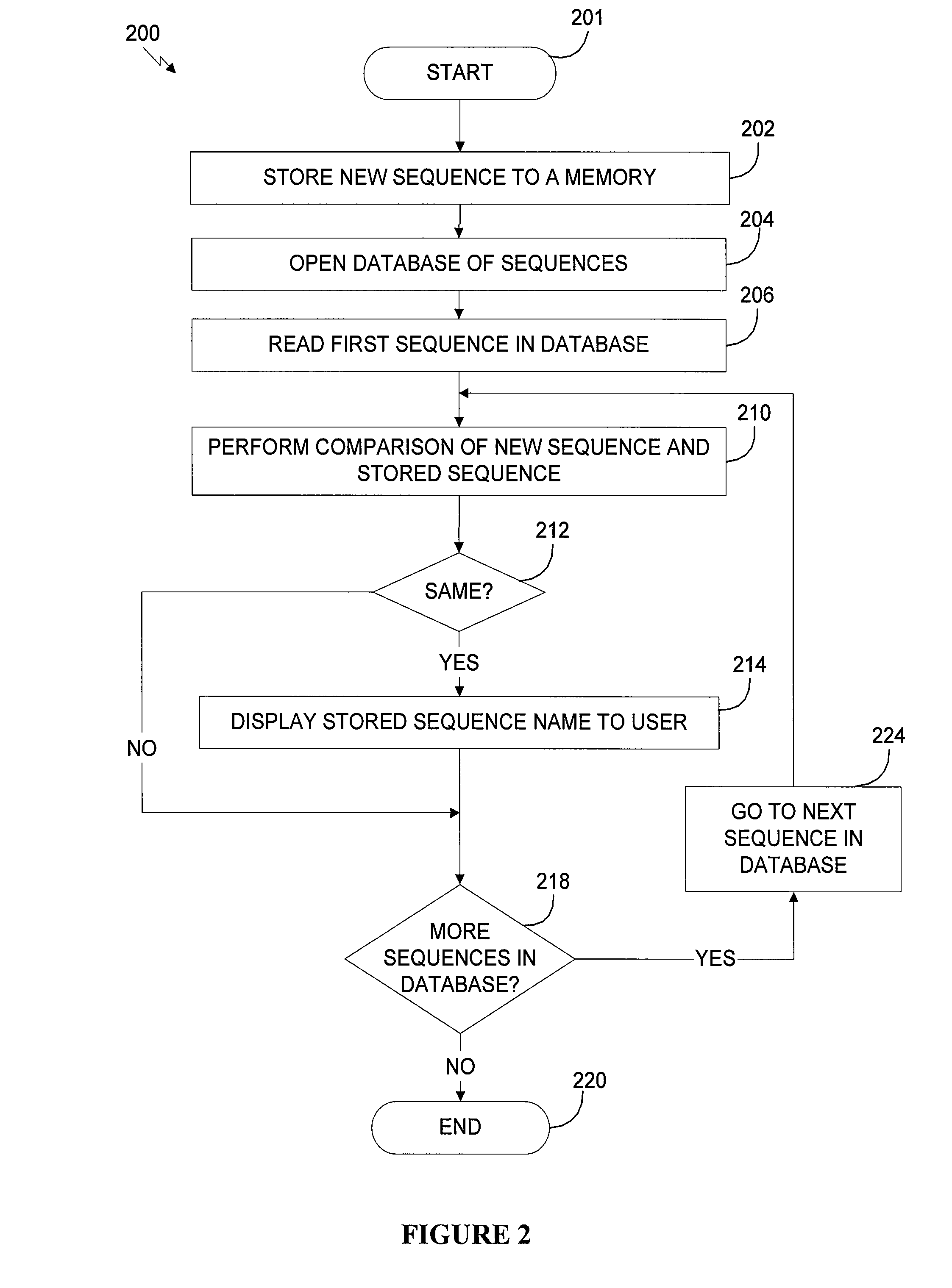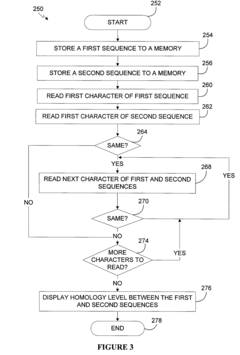Phospholipids Impact on Genetic Expression Regulations
JUL 16, 20259 MIN READ
Generate Your Research Report Instantly with AI Agent
Patsnap Eureka helps you evaluate technical feasibility & market potential.
Phospholipid-Gene Interaction Background
Phospholipids, essential components of cellular membranes, play a crucial role in various biological processes, including genetic expression regulation. The interaction between phospholipids and genes has been a subject of intense research in recent years, as scientists strive to understand the complex mechanisms underlying cellular function and gene regulation.
The study of phospholipid-gene interactions dates back to the early 1980s when researchers first observed that changes in membrane composition could affect gene expression. Since then, numerous studies have demonstrated the intricate relationship between phospholipids and genetic regulation, revealing a complex network of interactions that influence cellular processes at multiple levels.
Phospholipids serve as more than just structural components of cell membranes. They act as signaling molecules, participate in intracellular trafficking, and modulate the activity of membrane-bound proteins, including those involved in gene transcription and translation. The composition and distribution of phospholipids within cellular membranes can significantly impact the function of these proteins, thereby influencing gene expression patterns.
One of the key mechanisms through which phospholipids affect genetic expression is by modulating the activity of transcription factors. These proteins bind to specific DNA sequences and regulate gene expression. Certain phospholipids, such as phosphatidylinositol and its derivatives, can directly interact with transcription factors, altering their binding affinity or nuclear localization, and consequently affecting their ability to regulate target genes.
Furthermore, phospholipids play a crucial role in signal transduction pathways that ultimately lead to changes in gene expression. For instance, the hydrolysis of membrane phospholipids by phospholipases generates second messengers like diacylglycerol and inositol trisphosphate, which activate protein kinases and trigger calcium release, respectively. These events can initiate signaling cascades that result in the activation or repression of specific genes.
Recent advances in lipidomics and genomics have provided researchers with powerful tools to investigate the complex interplay between phospholipids and genetic regulation. High-throughput screening techniques and advanced imaging technologies have enabled scientists to map lipid-protein interactions and track changes in lipid composition in response to various stimuli, shedding light on the dynamic nature of phospholipid-mediated gene regulation.
As our understanding of phospholipid-gene interactions continues to grow, it becomes increasingly clear that these interactions are fundamental to cellular homeostasis and adaptation. The ability of cells to modulate their lipid composition in response to environmental cues and internal signals provides a flexible mechanism for fine-tuning gene expression and cellular function. This knowledge opens up new avenues for therapeutic interventions in diseases characterized by dysregulated gene expression or altered lipid metabolism.
The study of phospholipid-gene interactions dates back to the early 1980s when researchers first observed that changes in membrane composition could affect gene expression. Since then, numerous studies have demonstrated the intricate relationship between phospholipids and genetic regulation, revealing a complex network of interactions that influence cellular processes at multiple levels.
Phospholipids serve as more than just structural components of cell membranes. They act as signaling molecules, participate in intracellular trafficking, and modulate the activity of membrane-bound proteins, including those involved in gene transcription and translation. The composition and distribution of phospholipids within cellular membranes can significantly impact the function of these proteins, thereby influencing gene expression patterns.
One of the key mechanisms through which phospholipids affect genetic expression is by modulating the activity of transcription factors. These proteins bind to specific DNA sequences and regulate gene expression. Certain phospholipids, such as phosphatidylinositol and its derivatives, can directly interact with transcription factors, altering their binding affinity or nuclear localization, and consequently affecting their ability to regulate target genes.
Furthermore, phospholipids play a crucial role in signal transduction pathways that ultimately lead to changes in gene expression. For instance, the hydrolysis of membrane phospholipids by phospholipases generates second messengers like diacylglycerol and inositol trisphosphate, which activate protein kinases and trigger calcium release, respectively. These events can initiate signaling cascades that result in the activation or repression of specific genes.
Recent advances in lipidomics and genomics have provided researchers with powerful tools to investigate the complex interplay between phospholipids and genetic regulation. High-throughput screening techniques and advanced imaging technologies have enabled scientists to map lipid-protein interactions and track changes in lipid composition in response to various stimuli, shedding light on the dynamic nature of phospholipid-mediated gene regulation.
As our understanding of phospholipid-gene interactions continues to grow, it becomes increasingly clear that these interactions are fundamental to cellular homeostasis and adaptation. The ability of cells to modulate their lipid composition in response to environmental cues and internal signals provides a flexible mechanism for fine-tuning gene expression and cellular function. This knowledge opens up new avenues for therapeutic interventions in diseases characterized by dysregulated gene expression or altered lipid metabolism.
Market Analysis for Phospholipid Research
The market for phospholipid research is experiencing significant growth, driven by increasing applications in various sectors, particularly in healthcare and biotechnology. The global phospholipids market was valued at approximately $3.5 billion in 2020 and is projected to reach $5.8 billion by 2026, growing at a CAGR of 8.7% during the forecast period. This growth is primarily attributed to the rising demand for natural emulsifiers in the food and beverage industry, as well as the expanding use of phospholipids in pharmaceutical and cosmetic products.
In the healthcare sector, phospholipids play a crucial role in drug delivery systems, liposomal formulations, and cell membrane research. The increasing focus on personalized medicine and targeted drug delivery has led to a surge in demand for phospholipid-based nanocarriers. This trend is expected to continue, with the pharmaceutical segment accounting for the largest share of the phospholipids market.
The biotechnology industry is another major driver of phospholipid research market growth. As the understanding of genetic expression regulation deepens, researchers are increasingly exploring the role of phospholipids in cellular signaling and gene expression. This has led to a growing demand for high-purity phospholipids for research purposes, creating new opportunities for market players.
Geographically, North America dominates the phospholipid research market, followed by Europe and Asia-Pacific. The United States, in particular, is a key market due to its advanced healthcare infrastructure and significant investments in biotechnology research. However, emerging economies in Asia-Pacific, such as China and India, are expected to witness the highest growth rates in the coming years, driven by increasing healthcare expenditure and growing awareness of the potential applications of phospholipids.
The market is characterized by the presence of both large multinational corporations and smaller specialized companies. Key players in the phospholipid research market include Archer Daniels Midland Company, Cargill, Incorporated, and Lipoid GmbH, among others. These companies are focusing on research and development activities to develop novel phospholipid formulations and expand their product portfolios.
Despite the positive outlook, the phospholipid research market faces challenges such as the high cost of extraction and purification processes, as well as regulatory hurdles in certain applications. However, ongoing technological advancements in lipidomics and increasing collaborations between academic institutions and industry players are expected to drive innovation and create new growth opportunities in the market.
In the healthcare sector, phospholipids play a crucial role in drug delivery systems, liposomal formulations, and cell membrane research. The increasing focus on personalized medicine and targeted drug delivery has led to a surge in demand for phospholipid-based nanocarriers. This trend is expected to continue, with the pharmaceutical segment accounting for the largest share of the phospholipids market.
The biotechnology industry is another major driver of phospholipid research market growth. As the understanding of genetic expression regulation deepens, researchers are increasingly exploring the role of phospholipids in cellular signaling and gene expression. This has led to a growing demand for high-purity phospholipids for research purposes, creating new opportunities for market players.
Geographically, North America dominates the phospholipid research market, followed by Europe and Asia-Pacific. The United States, in particular, is a key market due to its advanced healthcare infrastructure and significant investments in biotechnology research. However, emerging economies in Asia-Pacific, such as China and India, are expected to witness the highest growth rates in the coming years, driven by increasing healthcare expenditure and growing awareness of the potential applications of phospholipids.
The market is characterized by the presence of both large multinational corporations and smaller specialized companies. Key players in the phospholipid research market include Archer Daniels Midland Company, Cargill, Incorporated, and Lipoid GmbH, among others. These companies are focusing on research and development activities to develop novel phospholipid formulations and expand their product portfolios.
Despite the positive outlook, the phospholipid research market faces challenges such as the high cost of extraction and purification processes, as well as regulatory hurdles in certain applications. However, ongoing technological advancements in lipidomics and increasing collaborations between academic institutions and industry players are expected to drive innovation and create new growth opportunities in the market.
Current Challenges in Phospholipid-Gene Studies
The field of phospholipid-gene interaction studies faces several significant challenges that hinder our comprehensive understanding of how these lipids impact genetic expression regulations. One of the primary obstacles is the complexity of the cellular environment, which makes it difficult to isolate and study specific phospholipid-gene interactions without interference from other cellular components. This complexity often leads to conflicting or inconclusive results, as the intricate network of cellular processes can mask or alter the direct effects of phospholipids on gene expression.
Another major challenge is the dynamic nature of phospholipid composition within cellular membranes. The lipid profile of membranes can change rapidly in response to various stimuli, making it challenging to establish consistent experimental conditions and replicate results across different studies. This variability also complicates the interpretation of data, as it becomes difficult to determine whether observed changes in gene expression are directly attributable to specific phospholipids or are the result of broader membrane alterations.
The lack of standardized methodologies for studying phospholipid-gene interactions presents another significant hurdle. Different research groups often employ varied techniques for lipid manipulation, gene expression analysis, and data interpretation, leading to discrepancies in findings and difficulties in comparing results across studies. This lack of standardization also hampers the development of a unified theoretical framework for understanding the role of phospholipids in genetic regulation.
Furthermore, the technological limitations in accurately measuring and manipulating phospholipid levels in living cells pose a considerable challenge. While advances in lipidomics have improved our ability to analyze lipid compositions, real-time monitoring of phospholipid dynamics and their immediate effects on gene expression remains elusive. This gap in technological capabilities restricts our ability to establish clear cause-and-effect relationships between specific phospholipid changes and alterations in gene expression patterns.
The multifunctional nature of phospholipids also complicates research efforts. These molecules not only serve as structural components of membranes but also act as signaling molecules and precursors for other bioactive compounds. Disentangling these various roles to isolate their specific effects on gene regulation is a complex task that requires sophisticated experimental designs and analytical approaches.
Lastly, the field faces challenges in translating in vitro findings to in vivo systems. The behavior of phospholipids and their interactions with genetic material can differ significantly between simplified experimental models and the complex environment of living organisms. Bridging this gap requires the development of more sophisticated in vivo models and improved techniques for studying phospholipid-gene interactions in physiologically relevant contexts.
Another major challenge is the dynamic nature of phospholipid composition within cellular membranes. The lipid profile of membranes can change rapidly in response to various stimuli, making it challenging to establish consistent experimental conditions and replicate results across different studies. This variability also complicates the interpretation of data, as it becomes difficult to determine whether observed changes in gene expression are directly attributable to specific phospholipids or are the result of broader membrane alterations.
The lack of standardized methodologies for studying phospholipid-gene interactions presents another significant hurdle. Different research groups often employ varied techniques for lipid manipulation, gene expression analysis, and data interpretation, leading to discrepancies in findings and difficulties in comparing results across studies. This lack of standardization also hampers the development of a unified theoretical framework for understanding the role of phospholipids in genetic regulation.
Furthermore, the technological limitations in accurately measuring and manipulating phospholipid levels in living cells pose a considerable challenge. While advances in lipidomics have improved our ability to analyze lipid compositions, real-time monitoring of phospholipid dynamics and their immediate effects on gene expression remains elusive. This gap in technological capabilities restricts our ability to establish clear cause-and-effect relationships between specific phospholipid changes and alterations in gene expression patterns.
The multifunctional nature of phospholipids also complicates research efforts. These molecules not only serve as structural components of membranes but also act as signaling molecules and precursors for other bioactive compounds. Disentangling these various roles to isolate their specific effects on gene regulation is a complex task that requires sophisticated experimental designs and analytical approaches.
Lastly, the field faces challenges in translating in vitro findings to in vivo systems. The behavior of phospholipids and their interactions with genetic material can differ significantly between simplified experimental models and the complex environment of living organisms. Bridging this gap requires the development of more sophisticated in vivo models and improved techniques for studying phospholipid-gene interactions in physiologically relevant contexts.
Existing Phospholipid-Gene Regulation Models
01 Phospholipid-mediated gene expression regulation
Phospholipids play a crucial role in regulating gene expression through various mechanisms, including signal transduction pathways and membrane interactions. These lipid molecules can influence the activity of transcription factors and other regulatory proteins, thereby modulating the expression of specific genes.- Phospholipid-mediated gene expression regulation: Phospholipids play a crucial role in regulating gene expression through various mechanisms, including signal transduction pathways and membrane interactions. These lipid molecules can influence the activity of transcription factors and other regulatory proteins, thereby modulating the expression of specific genes.
- Liposome-based gene delivery systems: Liposomes composed of phospholipids are utilized as efficient gene delivery vehicles. These nanostructures can encapsulate genetic material and facilitate its entry into target cells, enhancing transfection efficiency and gene expression. The composition and properties of the phospholipids used in liposome formulation can be optimized to improve gene delivery and expression outcomes.
- Phospholipid-induced changes in chromatin structure: Certain phospholipids can interact with chromatin and influence its structure, leading to alterations in gene accessibility and expression. These interactions may involve direct binding to histones or other chromatin-associated proteins, resulting in changes to DNA packaging and transcriptional activity.
- Phospholipid metabolism and gene expression: The metabolism of phospholipids is intricately linked to gene expression patterns. Enzymes involved in phospholipid synthesis and degradation can indirectly affect gene expression by altering cellular lipid composition, membrane properties, and signaling pathways. Understanding these metabolic processes provides insights into the regulation of genetic expression by phospholipids.
- Phospholipid-based biosensors for gene expression analysis: Innovative biosensors incorporating phospholipid membranes or nanostructures have been developed for detecting and analyzing gene expression. These biosensors can provide real-time monitoring of genetic activity and offer high sensitivity and specificity in measuring gene expression levels in various biological systems.
02 Liposome-based gene delivery systems
Liposomes composed of phospholipids are utilized as efficient gene delivery vehicles. These nanostructures can encapsulate genetic material and facilitate its transport across cellular membranes, enhancing transfection efficiency and gene expression in target cells.Expand Specific Solutions03 Phospholipid-induced epigenetic modifications
Certain phospholipids and their metabolites can influence epigenetic modifications, such as DNA methylation and histone modifications. These changes can alter chromatin structure and accessibility, leading to changes in gene expression patterns without altering the underlying DNA sequence.Expand Specific Solutions04 Membrane phospholipid composition and gene expression
The composition of membrane phospholipids can affect cellular signaling pathways and the activity of membrane-bound proteins involved in gene regulation. Changes in phospholipid profiles can lead to alterations in gene expression patterns, influencing cellular functions and responses to environmental stimuli.Expand Specific Solutions05 Phospholipid-based biosensors for gene expression analysis
Phospholipid-based biosensors are developed for detecting and analyzing gene expression levels. These sensors utilize the interactions between phospholipids and nucleic acids or proteins to measure changes in gene expression, providing valuable tools for studying genetic regulation in various biological systems.Expand Specific Solutions
Key Players in Phospholipid Genetics
The phospholipid impact on genetic expression regulation field is in an early developmental stage, with growing market potential as research advances. The market size is relatively small but expanding, driven by increasing interest in epigenetics and gene regulation. Technological maturity varies among key players. Academic institutions like Columbia University, Zhejiang University, and Yale University are at the forefront of basic research. Pharmaceutical companies such as Novartis, Merck, and Abbott Laboratories are leveraging this knowledge for potential drug development. Biotechnology firms like Incyte and Ionis Pharmaceuticals are exploring innovative applications. Overall, the field is characterized by collaborative efforts between academia and industry, with significant potential for breakthroughs in understanding and manipulating gene expression.
The Trustees of Columbia University in The City of New York
Technical Solution: Columbia University has developed innovative approaches to study phospholipid impact on genetic expression regulation. Their research focuses on the role of phospholipids in cell signaling pathways that influence gene expression. They have pioneered techniques to manipulate membrane phospholipid composition and observe resulting changes in transcription factor activity and gene expression patterns. Their methods combine advanced lipidomics, transcriptomics, and proteomics to provide a comprehensive view of phospholipid-mediated gene regulation[1][3]. They have also developed novel fluorescent probes to visualize phospholipid dynamics in living cells, allowing real-time monitoring of lipid-protein interactions that affect gene expression[5].
Strengths: Cutting-edge interdisciplinary approach, combining expertise in lipid biology, genetics, and advanced imaging techniques. Weaknesses: Research primarily focused on basic science, may require further development for clinical applications.
Merck Patent GmbH
Technical Solution: Merck has developed a comprehensive platform for studying phospholipid-mediated gene regulation, focusing on the interplay between membrane lipid composition and cellular signaling pathways. Their approach combines high-resolution lipidomics with CRISPR-based genetic screens to identify key phospholipid species and their corresponding regulatory proteins involved in gene expression control. Merck has also pioneered the use of synthetic biology techniques to engineer cellular membranes with defined phospholipid compositions, allowing for precise manipulation of lipid-dependent signaling cascades that influence gene expression[13][15]. Additionally, they have developed novel mass spectrometry methods for in situ analysis of phospholipid dynamics during transcriptional events, providing unprecedented insights into the temporal aspects of lipid-mediated gene regulation[14].
Strengths: Comprehensive and multidisciplinary approach, strong integration of cutting-edge technologies. Weaknesses: High complexity of the system may present challenges in data interpretation and therapeutic translation.
Breakthrough Studies in Phospholipid-Gene Interaction
Oncokinase fusion polypeptides associated with hyperproliferative and related disorders, nucleic acids encoding the same and methods for detecting and identifying the same
PatentInactiveUS20040045044A1
Innovation
- Development of oncokinase fusion polypeptides with constitutively activated tyrosine kinase activity, characterized by a C-terminal tyrosine kinase domain fused with an N-terminal domain, and methods for identifying, characterizing, diagnosing, and treating associated diseases, including screening assays for therapeutic agents.
Phospholipases, nucleic acids encoding them and methods for making and using them
PatentActiveUS20090053191A1
Innovation
- The development of phospholipases, such as PLC, PLA, and PLD, which can catalyze the hydrolysis of glycerolphosphate ester linkages in vegetable oils, converting non-hydratable phospholipids to a hydratable form and facilitating their removal, thereby reducing losses and improving oil refining processes.
Ethical Implications of Phospholipid-Gene Research
The ethical implications of phospholipid-gene research are multifaceted and require careful consideration as this field advances. One primary concern is the potential for unintended consequences in genetic manipulation. As phospholipids play a crucial role in cellular membranes and signaling pathways, altering their interactions with genetic expression could lead to unforeseen effects on organism development and function.
Privacy and consent issues also arise in this research area. Genetic information is highly personal, and studies involving phospholipid-gene interactions may reveal sensitive data about an individual's predisposition to certain diseases or traits. Ensuring proper informed consent and protecting participants' genetic information becomes paramount in such studies.
The potential for enhancing human capabilities through phospholipid-gene research raises questions about fairness and equality. If advancements in this field lead to therapies or enhancements that improve cognitive function or physical performance, access to these benefits may be limited by socioeconomic factors, potentially exacerbating existing societal inequalities.
Environmental concerns must also be addressed. Modifications to phospholipid-gene interactions in organisms could have far-reaching ecological impacts if these altered organisms were to be released into the environment. The potential for unintended effects on ecosystems and biodiversity must be carefully evaluated and regulated.
The use of animal models in phospholipid-gene research presents its own set of ethical challenges. While animal studies are often necessary for advancing scientific understanding, researchers must ensure that experiments are conducted humanely and with minimal suffering, adhering to strict ethical guidelines for animal research.
Lastly, the potential for dual-use research outcomes in phospholipid-gene studies cannot be ignored. Advancements in this field could potentially be misused for harmful purposes, such as the development of biological weapons. Establishing robust safeguards and international oversight mechanisms is crucial to prevent such misuse while allowing beneficial research to continue.
As research in this field progresses, it is essential to maintain an ongoing dialogue between scientists, ethicists, policymakers, and the public to address these ethical concerns and ensure that the benefits of phospholipid-gene research are realized responsibly and equitably.
Privacy and consent issues also arise in this research area. Genetic information is highly personal, and studies involving phospholipid-gene interactions may reveal sensitive data about an individual's predisposition to certain diseases or traits. Ensuring proper informed consent and protecting participants' genetic information becomes paramount in such studies.
The potential for enhancing human capabilities through phospholipid-gene research raises questions about fairness and equality. If advancements in this field lead to therapies or enhancements that improve cognitive function or physical performance, access to these benefits may be limited by socioeconomic factors, potentially exacerbating existing societal inequalities.
Environmental concerns must also be addressed. Modifications to phospholipid-gene interactions in organisms could have far-reaching ecological impacts if these altered organisms were to be released into the environment. The potential for unintended effects on ecosystems and biodiversity must be carefully evaluated and regulated.
The use of animal models in phospholipid-gene research presents its own set of ethical challenges. While animal studies are often necessary for advancing scientific understanding, researchers must ensure that experiments are conducted humanely and with minimal suffering, adhering to strict ethical guidelines for animal research.
Lastly, the potential for dual-use research outcomes in phospholipid-gene studies cannot be ignored. Advancements in this field could potentially be misused for harmful purposes, such as the development of biological weapons. Establishing robust safeguards and international oversight mechanisms is crucial to prevent such misuse while allowing beneficial research to continue.
As research in this field progresses, it is essential to maintain an ongoing dialogue between scientists, ethicists, policymakers, and the public to address these ethical concerns and ensure that the benefits of phospholipid-gene research are realized responsibly and equitably.
Phospholipid-Gene Regulation Applications
The applications of phospholipid-gene regulation mechanisms are diverse and hold significant potential across various fields. In the realm of medicine, understanding these interactions can lead to novel therapeutic approaches for genetic disorders. By manipulating phospholipid compositions, researchers may be able to modulate gene expression in targeted cells, potentially offering new treatments for conditions such as cancer, metabolic disorders, and neurodegenerative diseases.
In agriculture, phospholipid-gene regulation applications show promise for crop improvement. By altering the phospholipid profiles of plant cells, scientists can potentially enhance stress tolerance, increase yield, and improve nutritional content. This could lead to the development of more resilient and productive crop varieties, addressing global food security challenges.
The field of biotechnology stands to benefit greatly from advances in phospholipid-gene regulation. Engineered microorganisms with optimized phospholipid compositions could enhance the production of valuable compounds, such as biofuels, pharmaceuticals, and industrial enzymes. This approach may improve the efficiency and cost-effectiveness of various biotechnological processes.
In environmental science, phospholipid-gene regulation applications offer potential solutions for bioremediation. Microorganisms with enhanced abilities to degrade pollutants could be developed by modifying their phospholipid profiles, leading to more effective cleanup of contaminated sites.
The cosmetics and personal care industry may also leverage phospholipid-gene regulation to develop advanced skincare products. By understanding how phospholipids influence gene expression in skin cells, researchers could create formulations that target specific dermatological concerns more effectively.
In the field of nutraceuticals, phospholipid-gene regulation insights could lead to the development of functional foods with enhanced health benefits. By manipulating the phospholipid content of food products, it may be possible to influence gene expression in consumers, potentially offering preventive health benefits.
As research in this area progresses, we can expect to see an increasing number of applications across various sectors, from healthcare to industrial biotechnology. The potential for phospholipid-gene regulation to address complex challenges in multiple fields underscores its importance as a key area of scientific inquiry and technological development.
In agriculture, phospholipid-gene regulation applications show promise for crop improvement. By altering the phospholipid profiles of plant cells, scientists can potentially enhance stress tolerance, increase yield, and improve nutritional content. This could lead to the development of more resilient and productive crop varieties, addressing global food security challenges.
The field of biotechnology stands to benefit greatly from advances in phospholipid-gene regulation. Engineered microorganisms with optimized phospholipid compositions could enhance the production of valuable compounds, such as biofuels, pharmaceuticals, and industrial enzymes. This approach may improve the efficiency and cost-effectiveness of various biotechnological processes.
In environmental science, phospholipid-gene regulation applications offer potential solutions for bioremediation. Microorganisms with enhanced abilities to degrade pollutants could be developed by modifying their phospholipid profiles, leading to more effective cleanup of contaminated sites.
The cosmetics and personal care industry may also leverage phospholipid-gene regulation to develop advanced skincare products. By understanding how phospholipids influence gene expression in skin cells, researchers could create formulations that target specific dermatological concerns more effectively.
In the field of nutraceuticals, phospholipid-gene regulation insights could lead to the development of functional foods with enhanced health benefits. By manipulating the phospholipid content of food products, it may be possible to influence gene expression in consumers, potentially offering preventive health benefits.
As research in this area progresses, we can expect to see an increasing number of applications across various sectors, from healthcare to industrial biotechnology. The potential for phospholipid-gene regulation to address complex challenges in multiple fields underscores its importance as a key area of scientific inquiry and technological development.
Unlock deeper insights with Patsnap Eureka Quick Research — get a full tech report to explore trends and direct your research. Try now!
Generate Your Research Report Instantly with AI Agent
Supercharge your innovation with Patsnap Eureka AI Agent Platform!
